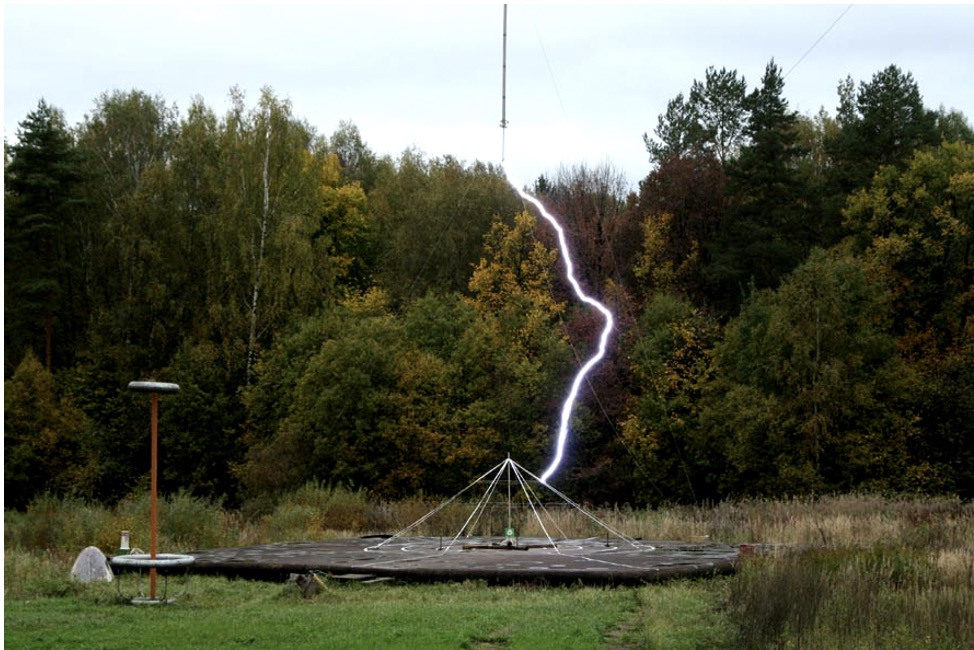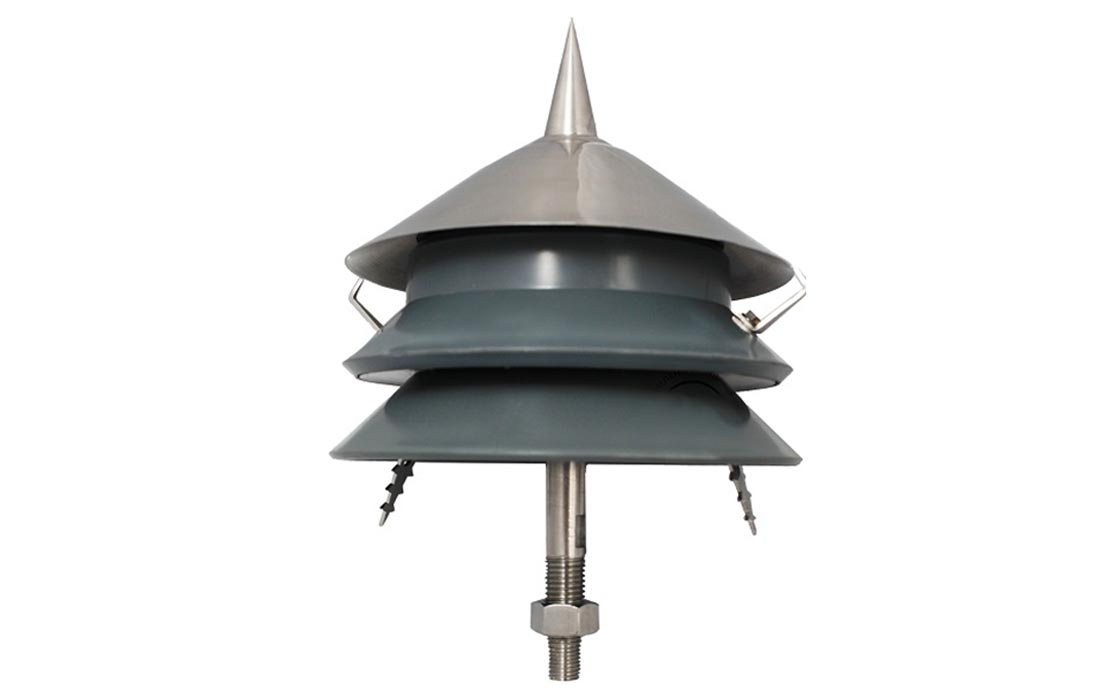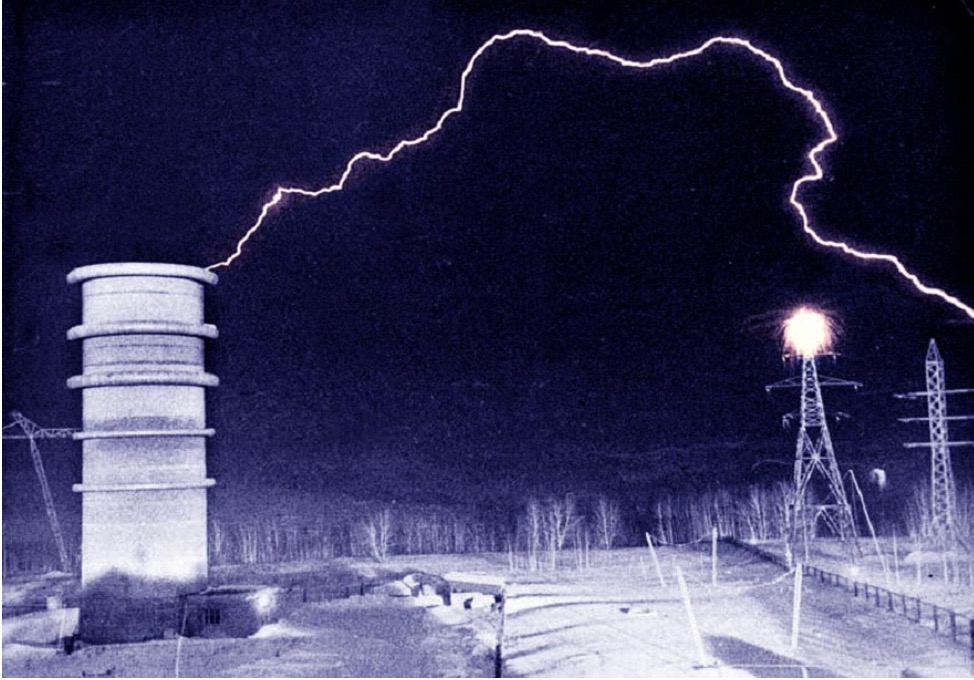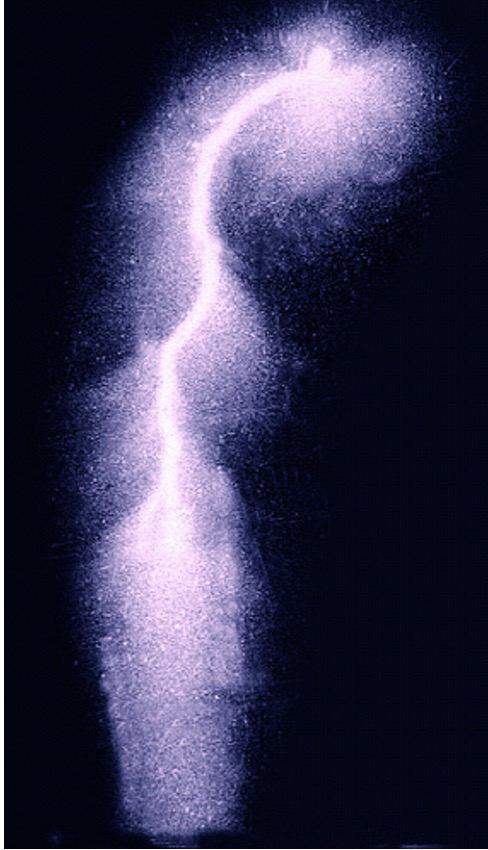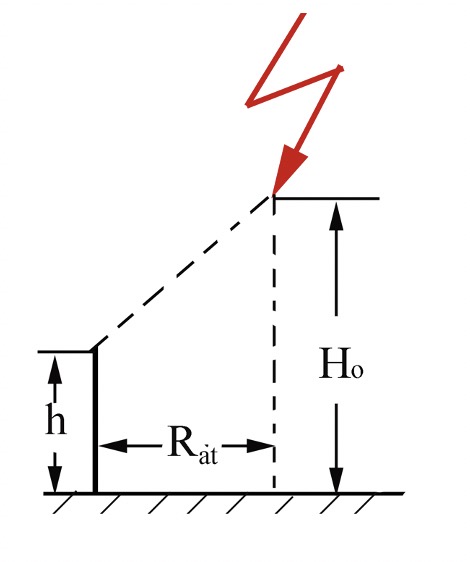
We have to start with a well-known fact. Lightnings never strike an on-ground structure. Its channel was always taken by the opposite leader. The longer it is, the more efficient the catch is. We will try to get maximum from this experimental fact, the more so since the lightning arrester operation experience allows providing a material quantitative clarification to the foregoing. A concentrated structure (lightning rod, mast, tower, antenna) having height h, on average, takes lightnings from the area having radius 3h. This is how lightning collection radius Rat = 3h. is defined. Certainly, we are talking about a total of all lightnings, without their classification in terms of the current. Unfortunately, no mass measurements of lightning currents at the facilities of conventional height (up to 100 m) have been made, and we do not have any reliable statistics for the lightnings with different currents, although this is a very important statistics. Engineers need to know the frequency of strikes by lightnings having the current exceeding the value hazardous for the protected facility rather than just a frequency of lightning strikes.
However, even the averaged collection radius value is useful because it allows estimating averaged lightning orientation height H0. In the first approximation, the equal distance principle can be used for this. It is assumed that, at the level of orientation height, between two paths, to the ground and to the grounded facility, the lightning will certainly choose the shortest one.
Read more details in the article by Prof. E. M. Bazelyan "How Does A Lightning Orient and Can We Control This?".
Related Articles:
